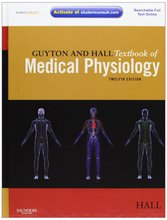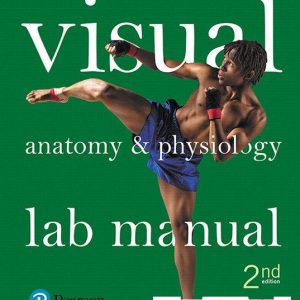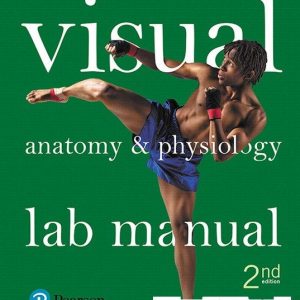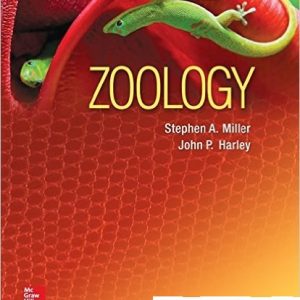This is completed downloadable of Guyton and Hall Textbook of Medical Physiology Hall 12th Edition Test Bank

Product Details:
- ISBN-10 : 1416045740
- ISBN-13 : 978-1416045748
- Author:
The twelfth edition of Guyton and Hall Textbook of Medical Physiology continues this best-selling title’s long tradition as one of the world’s favorite physiology textbooks. The immense success of this book is due to its description of complex physiologic principles in language that is easy to read and understand. Now with an improved color art program, thorough updates reflecting today’s medicine and science, and accessible online at Student Consult, this textbook is an excellent source for mastering essential human physiology knowledge. Learn and remember vital concepts easily thanks to short, easy-to-read, masterfully edited chapters and a user-friendly full-color design. See core concepts applied to real-life situations with clinical vignettes throughout the text. Discover the newest in physiology with updates that reflect the latest advances in molecular biology, cardiovascular, neurophysiology, and gastrointestinal topics. Visuali
Table of Content:
- I. Introduction to physiology: the cell and general physiology
- 1. Functional organization of the human body and control of the ‘internal environment
- 2. The cell and its functions
- 3. Genetic control of protein synthesis, cell function, and cell reproduction
- II. Membrane physiology, nerve, and muscle
- 4. The DNA code in the cell nucleus is transferred to an RNA code in the cell cytoplasm — the process of transcription
- 5. Membrane potentials and action potentials
- 6. Contraction of skeletal muscle
- 7. Excitation of skeletal muscle: neuromuscular transmission and excitation-contraction coupling
- 8. Contraction and excitation of smooth muscle
- III. The heart
- 9. Cardiac muscle: the heart as a pump and function of the heart muscles
- 10. Rhythmical excitatory and conductive system of the heart
- 11. The normal electrocardiogram
- 12. Electrocardiographic interpretation of cardica muscle and coronary blood flow abnormalities: vectrial analysis
- 13. Cardiac arrhythmias and their electrocardiographic interpretation
- IV. The circulation
- 14. Overview of the circulation; medical biophysics of pressure, flow, and resistance
- 15. Vascular distensibility and functions of the arterial and venous systems
- 16. The microcirculation and lymphatic system: capillary fluid exchange, interstitial fluid, and lymph flow
- 17. Local and humoral control of tissue flow by the tissues
- 18. Nervous regulation of the circulation, and rapid control of arterial pressure
- 19. Role of the kidneys in long-term control of arterial pressure and in hypertension: the integrated system for aterial pressure regulation
- 20. Cardiac output, venous return, and their regulation
- 21. Muscle blood flow and cardiac output during exercise; the coronary circulation and ischemic heart disease
- 22. Cardiac failure
- 23. Heart valves and heart sounds; dynamics of valvular and congenital heart defects
- 24. Circulatory shock and physiology of its treatment
- V. The body fluids and kidneys
- 25. The body fluids compartments: extracellular and intracellular fluids; intersitial fluid and edema
- 26. Urine formation by the kidneys: I. Glomerular filtration, renal blood flow, and their control
- 27. Urine formation by the kidneys: II. Tubular reabsorption and secretion
- 28. Urine concentration and dilution; regulation of extracellular fluid osmolarity and sodium concentration
- 29. Renal regulation of potassium, calcium, phosphate, and magnesium; integration of renal mechanisms for control of blood volume and extracellular fluid volume
- 30. Acid-base regulation
- 31. Diuretics and kidney diseases
- VI. Blood cells, immunity, and blood coagulation
- 32. Red blood cells, anemia, and polycythemia
- 33. Resistance of the body to infection: I. Leukocytes, granulocytes, the monocyte-macrophage system, and inflammation
- 34. Resistance of the body to infection: II. Immunity and allergy
- 35. Blood types; transfusion; tissue and organ transplanation
- 36. Hemostasis and blood coagulation
- VII. Respiration
- 37. Pulmonary ventilation
- 38. Pulmonary circulation, pulmonary edema, pleural fluid
- 39. Physical principles of gas exchange; diffusion of oxygen and carbon dioxide through the respiratory membrane
- 40. Transport of oxygen and carbon dioxide in blood and tissue fluids
- 41. Regulation of respiration
- 42. Respiratory insufficiency – pathophysiology, diagnosis, oxygen therapy
- VIII. Aviation, space, and deep-sea diving physiology
- 43. Aviation, high-altitude, and space physiology
- 44. Physiology of deep-sea diving and other hyperbaric conditions
- IV. The nervous system: A. General principles and sensory physiology
- 45. Organization of the nervous system, basic functions of synapses, “Transmitter sybstances”
- 46. Sensory receptors, neuronal circuits for processing information
- 47. Somatic sensations: I. General organization, the tactile and position senses
- 48. Somatic sensations: II. Pain, headache, and thermal sensations
- X. The nervous system: B. The special senses
- 49. The eye: I. Optics of vision
- 50. The eye: II. Receptor and neural function of the retina
- 51. The eye: III. Central neurophysiology of vision
- 52. The sense of hearing
- 53. The chemical senses – taste and smell
- XI. The nervous system: C. Motor and integrative neurophysiology
- 54. Motor functions of the spinal cord; the cord reflexes
- 55. Cortical and brain stem control of motor function
- 56. Contributions of the cerebellum and basal ganglia to overall motor control
- 57. Cerebral cortex, intellectual functions of the brain, learning and memory
- 58. Behavioral and motivational mechanisms of the brain – the limbic system and the hypothalamus
- 59. States of brain activity – sleep, brain waves, epilepsy, psychoses
- 60. The autonomic nervous system and the adrenal medulla
- 61. Cerebral blood flow, cerebrospinal fluid, and brain metabolism
- XII. Gastrointestinal physiology
- 62. General principles of gastrointestinal function – motility, nervous control, and blood circulation
- 63. Propulsion and mixing of food in the alimentary canal
- 64. Secretory functions of the alimentary tract
- 65. Digestion and absoprtion in the gastroinestinal tract
- 66. Physiology of gastrointestinal disorders
- XIII. Metabolism and temperature regulation
- 67. Metabolism of carbohydrates
- 68. Lipid metabolism
- 69. Protein metabolism
- 70. The liver
- 71. Dietary balances; regulation of feeding; obesity and starvation; vitamins and minerals
- 72. Energetics and metabolic rate
- 73. Body temperature, temperature regulation, and fever
- XIV. Endocrinology and reproduction
- 74. Introduction to endocrinology
- 75. Pituitary hormones and their control by the hypopthalamus
- 76. Thyroid metabolic hormones
- 77. Adenocortical hormones
- 78. Insulin, glucagon, and diabetes mellitus
- 79. Parathyroid hormone, calcitonin, calcium and phosphate metabolism, vitamin D, bone, and teeth
- 80. Reproductive and hormonal functions of the mail (and function of the pineal gland)
- 81. Female physiology before pregnancy and female hormones
- 82. Pregnancy and lactation
- 83. Fetal and neonatal physiology
- XV. Sports physiology
- 84. Sports physiology
People Also Search:
guyton and hall textbook of medical physiology hall
guyton and hall textbook of medical physiology hall 12th edition
guyton and hall textbook of medical physiology hall 12th edition download scribd
guyton and hall textbook of medical physiology hall 12th edition test bank download pdf





